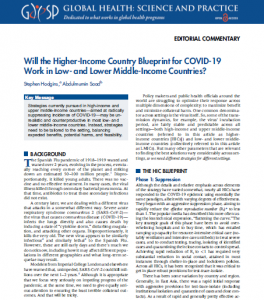
The Spanish Flu pandemic of 1918–1919 waxed and waned over 2 years, evolving in the process, eventually reaching every corner of the planet and striking down an estimated 50–100 million people. Disproportionately, it killed young adults. There was no vaccine and no effective treatment. In many cases, the viral illness killed through secondary bacterial pneumonia. At that time, antibiotics to treat these secondary infections did not exist.
A century later, we are dealing with a different virus that attacks in a somewhat different way. Severe acute respiratory syndrome coronavirus 2 (SARS-CoV-2)—the virus that causes coronavirus disease (COVID-19)— infects the lungs directly and also causes death by inducing a state of “cytokine storm,” disturbing coagulation, and attacking other organs.
Disproportionately, it kills the very old. The new virus appears to be similarly infectious and similarly lethal to the Spanish Flu. However, these are still early days and there’s much we do not know, including how it may affect different populations in different geographies and what long-term sequelae may result.